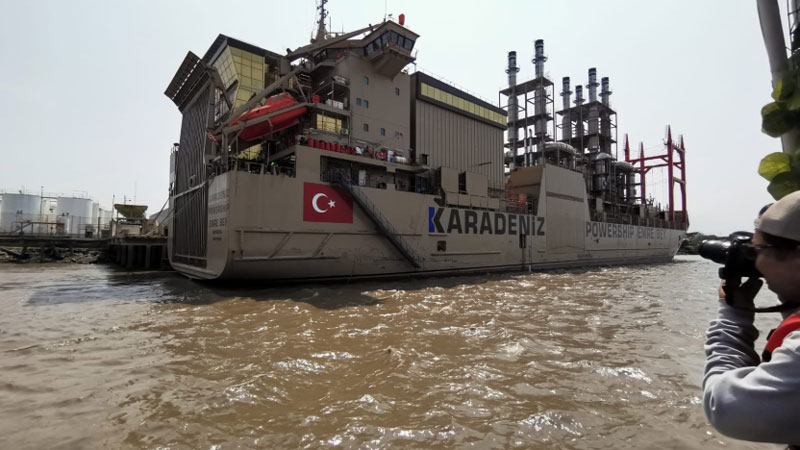Rains boost electricity generation to 92% of capacity; Indigenous oil protest ends; Cuenca gets credit line for sustainable transportation projects
Ecuador’s hydroelectric generation plants are operating at their highest level in more than three months, the Energy Ministry  reported Sunday. As a result of recent rains in the intermountain valley and in the eastern foothills of the Andes, the generation facilities were running at 92% capacity as of Sunday.
reported Sunday. As a result of recent rains in the intermountain valley and in the eastern foothills of the Andes, the generation facilities were running at 92% capacity as of Sunday.
“We have enjoyed a week of above-average rainfall in the areas near the Rio Paute and Rio Coca, where our largest electricity generation plants are located,” the Energy Ministry said in a statement. “As a result, increased river flow has boosted electric output to levels not seen since September. The Meteorology Institute is forecasting additional rainfall through mid-week, which will further amplify power production.”

The Rio Paute hydroelectric generation complex, east of Cuenca, has increased its generation capacity as a result of recent rains.
Last week, the Energy Ministry delayed the resumption of power blackouts until January 15 from January 2, and said blackouts could remain suspended beyond mid-month depending on water-flow conditions at the generation facilities.
The Ministry said major increases in flow rate on the Rio Paute is the primiary factor in delaying and possibly suspending blackouts. “In mid-December, the three generation plants on the Rio Paute were operating at less than 25% capacity. On Saturday, they were at 90% capacity.
Because of greater rainfall, the Coca Coda Sinclair plant on the Rio Coca was operating above 75% capacity.” According to the Ministry, Coca Coda Sinclair was operating at 95% capacity on Sunday.
In its statement, the Energy Ministry said that maintenance and repair work at both the Rio Paute and Rio Coca facilities is scheduled for January, which will cause a slight reduction in operating capacity.
Indigenous oil protest ends
Ecuador has reached an agreement with an indigenous community in Orellana Province, ending a blockade of oil projects in the area, the ministry of energy and mining said on Saturday. Protests by the Waorani Kawymeno community had blocked access to the Ishpingo oil field forcing state-run oil producer Petroecuador to declare a force majeure, a legal move that protects a company when it cannot meet its contractual obligations due to factors beyond its control.
The Waorani Kawymeno governing council had complained about pollution of water from the Ishpingo and claimed the government had not followed through on promises of more income from the project.
The protests had cut oil output at Ishpingo facilities by about 17,000 barrels per day. Ecuador produces about 420,000 barrels a day from all its fields.
Cuenca gets credit line for transportation needs
The Development Bank of Ecuador (BDE) will provide up to $24.2 million for sustainable urban mobility programs in Cuenca’s historic district.
The money will be offered through a line of credit with the bank, to be repaid at a 5% interest rate. Among the projects being considered by the municipal government are new bike lanes and pedestrian-only streets. The money may also be used to plan future expansion of the city’s electric tram system.

















